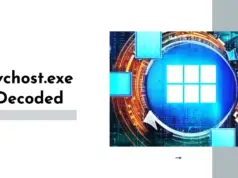Have you ever tried to set up a new disk on your Windows 10? If you have, you most likely have come across mbr or gpt. In the process, the system must have asked you whether you want to use MBR (Master Boot Record) or GPT (GUID Partition Table).
If you do not know what these are, the chances are that you just went with your guts and picked one. There is a difference between GPT and MBR, I would in this article make it clear.
To kick off, one must note that GPT comes along with a host of advantages, yet still, MBR remains the most compatible and a necessity in a few instances. This cuts across the Mac OS X, Linux, and other operating systems can also use GPT.
GPT is the new standard and is aimed to replace MBR. For one who has partitioned and formatted a disk or one who has set up a Mac to dual boot Windows, you had to deal with MBR and GPT.
GPT and MBR: What do they do?
They are options for storing partitioning information on your hard drive. The information stored by either MBR or GPT comprises start and end points of partitions. This is essential for your OS in identifying what partition is bootable and which sectors belong to each partition.
For this purpose, one must choose between MBR or GPT before creating partitions on a drive.
Related post How to Free Disk Space Automatically with Windows 10 Storage Sense
Why GPT is the new standard
With MBR, there were a few limitations which GPT exploits in becoming the pack leaders.
MBR Drawbacks
From its inception in 1983, it was called MBR (Master Boot Record) because of its boot sector located at the beginning of a drive. This sector contains two main components;
- A bootloader for the installed operating system
- Information about the drive’s logical partitions.
The bootloader is code for loading the larger bootloader from a different partition on a drive.
This becomes an issue because if you have Windows installed, the initial bits of the Windows bootloader reside here. This becomes a reason the MBR may need repair if it’s overwritten and Windows won’t start. On a Linux OS, the GRUB boot loader will typically be located in the MBR.
One major limitation of MBR is that it will only work with disks up to 2 TB in size. Also because of its compatibility with only four partitions, one is forced to make one of the primary partitions an “extended partition” and create logical partitions inside it if there is a need for more partitions. Normally this trick in creating partitions should be avoided, hence making it a limitation for MBR.
What GPT offers
The GUID Partition Table (GPT) is the new standard replacing MBR. It works with UEFI, a replacement to the old BIOS.
With GPT, each drive partition has a “globally unique identifier, (GUID). This simply is a random string long enough to ensure every GPT partition has its own unique identifier.
Unlike MBR, GPT-based drives have the potential to be very large. The size limits, however, will depend on the operating system and its file systems. A marked difference is that it accommodates for unlimited partitions.
Another marked advantage is that GPT stores multiple copies of data across the disk. This guides against data corruption and increases the chances of data recovery.
Conclusion: MBR or GPT
With the shift being made to GPT all OSs are now compliant with GPT. Windows, for instance, will only boot from GPT on UEFI-based computers running 64-bit versions of Windows 10, 8, 7. All versions also being able to read GPT drives and use them for data.
Linux runs and in-built support for GPT. Apple has made the shift too with it’s Intel Macs no longer using Apple’s APT (Apple Partition Table) scheme but rather GPT.



























